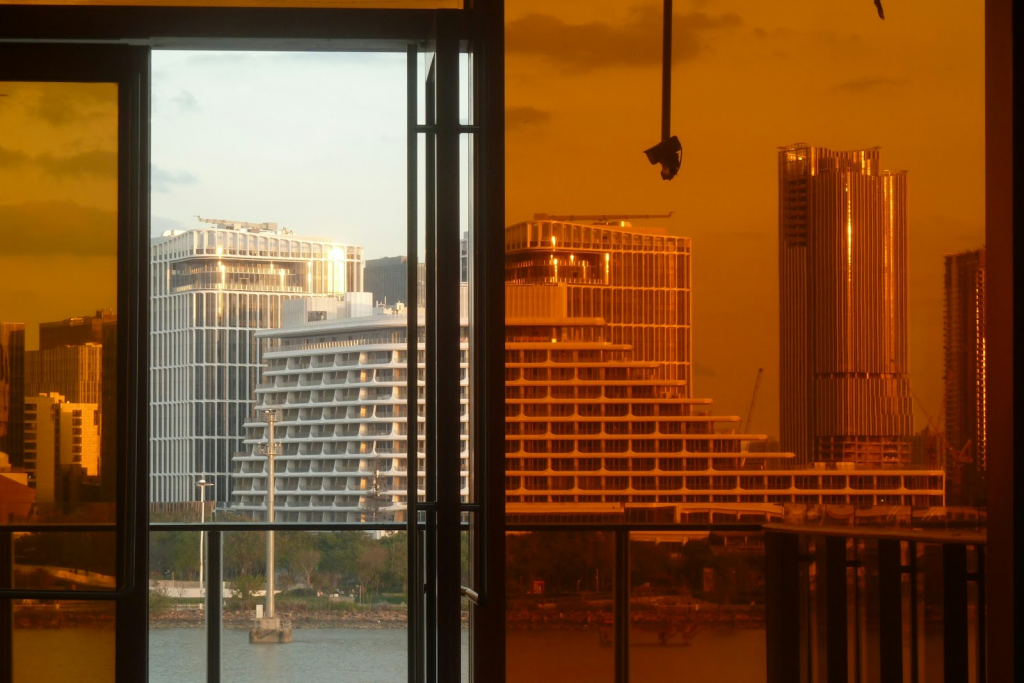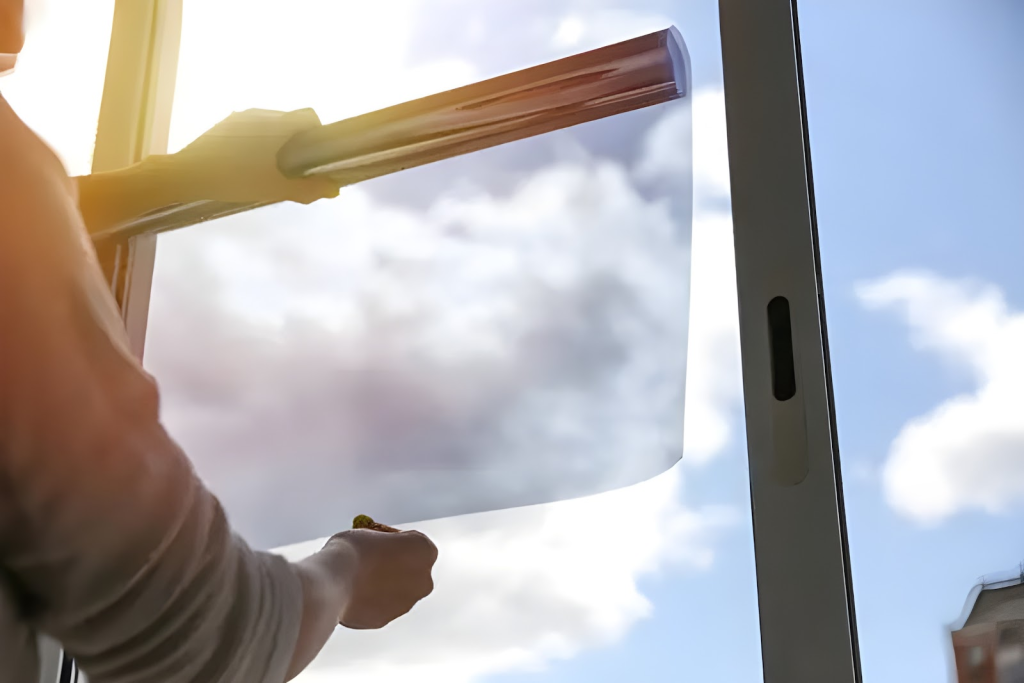
The Arizona sun is intense. Whether you’re cruising in your car or working in your office, that relentless heat and glare can be brutal. But what if there was a simple solution to make things more comfortable, protect your interiors, and even save you some money? That’s where window tinting comes in.
Here at Arizona Window Washers, we’re known for making windows sparkle. In our years of cleaning windows across Arizona, we’ve seen countless tinted windows on cars and buildings, and we’ve learned a thing or two about this seemingly magical film that does so much more than just look cool.
This guide will walk you through everything you need to know about the world of the tint. From the different types of window film available to the legal stuff, and whether you should tackle it yourself or call in the pros, we’ve got you covered. Let´s discover the world of tints for both your ride and your building!
What is Window Tinting, Anyway?
At its core, window tinting is all about adding a super-thin layer of film to the inside of your glass windows. This isn’t just any old plastic wrap; it’s usually made with a durable polyester base, forming a thin laminate film.
Why Bother with Window Tint?

Okay, so we know what it is, but why should you consider window tinting? Turns out, there are some pretty compelling reasons, whether you’re talking about your car or your office:
UV Protection: The Invisible Enemy
Sunlight feels great, but it packs a hidden punch: ultraviolet radiation. These harmful UV rays are bad news for your skin, and they’re also the main culprit behind fading interiors – think dashboards, upholstery in your car, or furniture and carpets in your home or building. Window tint acts like a sunscreen for your windows, blocking out a huge chunk (like, 99% in many cases!) of that damaging UV light.
Keeping Your Cool: Heat Reduction
Arizona summers are no joke. Window tint significantly reduces solar heat gain, which is just a fancy way of saying it keeps things cooler. In your car, that means less blasting the AC. In your building, it translates to lower energy bills and a more comfortable environment. Win-win!
Taming the Glare: See Clearly Now
Squinting while driving or struggling to see your computer screen because of glare? Window tint cuts down on that annoying brightness, improving visibility and making things easier on your eyes. For drivers, that also means a reduced risk of accidents caused by glare. For buildings, it keeps the work environment more comfortable.
Privacy and Style: Looking Good, Feeling Good
Let’s be real, tint can make your car look seriously sleek (just picture a Tesla with perfectly tinted windows). But it’s not just about looks. Different levels of darkness offer increased privacy, whether you’re on the road or in your office. It is a nice coating that protects your interiors.
Protection
The protective coating is designed to absorb and disperse impact, reducing the likelihood of the glass shattering into large, sharp pieces.
Types of Window Tint Film
When you start looking into window tint, you’ll quickly realize there’s more than one option. Here’s a quick rundown of the main types, so you can get a feel for what’s out there:
Dyed Window Tint: The Budget-Friendly Choice
This is your entry-level tint. It’s the most affordable and primarily focuses on giving you that darker look and reducing glare. Dyed film has a layer of dye that absorbs some solar heat, but it’s not the most effective at heat rejection. It works for both cars and buildings if heat blocking isn’t your top priority.
Metalized Window Tint
Metalized film takes things up a notch. It contains tiny metal particles (don’t worry, they’re invisible!) that actually reflect heat away. This makes it more durable and better at keeping things cool than dyed film. One thing to keep in mind: in some cases, these metal particles can interfere with cell signals or GPS in cars, but it isn’t super common.
Ceramic Window Tint
If you want the best of the best, ceramic is where it’s at. This type uses non-conductive ceramic particles, offering superior heat rejection, UV protection, and crystal-clear visibility. It doesn’t mess with electronic signals, making it a great choice for high-end vehicles and buildings where performance is key.
Carbon Window Tint
This option provides a unique matte-black finish, that will give a stylish look to any car or building. It´s not so popular, but the ones that use it, are very happy with the results.
Visible Light Transmission (VLT)
When you’re shopping for window tint, you’ll see this term “VLT” thrown around a lot. It stands for Visible Light Transmission, and it’s actually pretty simple: it’s just the percentage of visible light that can pass through the window film.
Think of it this way:
- Higher VLT = lighter tint: A film with a 70% VLT lets in 70% of the light, so it’s relatively light.
- Lower VLT = darker tint: A film with a 5% VLT only lets in 5% of the light, making it very dark.
The level of darkness you choose affects both the look of your windows and, importantly, how much you can see out of them. That´s why is super important to chose the right one. Choosing a film with a very low VLT, can affect your visibility.
The key takeaway here? VLT is all about finding the right balance between privacy, aesthetics, and, crucially, staying legal. Which brings us to…
Window Tinting Laws
Before you get your windows tinted, it’s essential to know the rules. Window tinting laws vary from state to state, and Arizona has its own specific regulations. Getting it wrong can mean a citation – and nobody wants that.
Car Window Tinting Laws in Arizona
Arizona’s laws are based on that VLT percentage we just talked about. Here’s the gist:
- Windshield: You can have a non-reflective tint above the manufacturer’s AS-1 line (that little line near the top of your windshield).
- Front side windows: Must allow more than 33% of light in (33% VLT or higher).
- Rear side windows: Any level of darkness is permitted.
- Rear window: Any level of darkness is permitted.
So, you’ve got some flexibility with the back windows, but you need to be careful with the front side windows and windshield to avoid a ticket. The amount of tint needs to be legal.
Building Window Tinting Regulations
While Arizona has very specific rules for car window tinting, regulations for commercial and residential buildings are generally less restrictive. The focus is often more on energy efficiency than specific VLT limits. Still, it’s always a good idea to check with local ordinances just to be sure.
The Bottom Line
Don’t guess! Double-check the current Arizona regulations (they can sometimes change) before you get any tinting done. A reputable tint shop will know the laws inside and out and ensure any installed tint is 100% legal. We wouldn´t want you to have a bad time because of an illegal car window tint.
DIY or Pro? Making the Right Choice for Your Tint

So, you’re sold on the benefits of window tint – great! Now comes the big question: should you try to install it yourself, or hire a professional?
DIY: Tempting, I Know, But Tricky
You can find DIY window tint kits online and in auto parts stores. They’re definitely cheaper than professional installation, and the idea of doing it yourself can be appealing. But here’s the reality: tinting is harder than it looks. You’ll need a heat gun, a squeegee, a spray bottle, a very steady hand, and a lot of patience. Common problems include:
- Creases and bubbles: Getting a perfectly smooth finish is tough.
- Uneven application: It’s easy to end up with gaps or overlaps.
- Excess film: Trimming the film cleanly around curves and edges takes skill.
- Finding the perfect level of tint.
- Making it legal.
Honestly, DIY tint is best reserved for small, flat windows – maybe a single pane on a shed, for example.
Professional Installation: The Smart Move (Especially in Arizona!)
For your car, and definitely for your building, professional automotive window tinting is the way to go. Here’s why:
- Expertise: Professional tinters have the experience and training to get the job done right.
- Tools and techniques: They have the right equipment and know the proper methods to avoid those pesky creases and bubbles.
- High-quality film: Pros use top-notch window tint film that will last longer and perform better.
- Warranty: Most reputable shops offer a warranty on both the film and the installation, giving you peace of mind.
- Legal compliance: They’ll make sure your tint meets all Arizona regulations. It is very important for them to have a certification.
Especially in Arizona’s intense heat, you want a tint job that’s going to hold up. Professional installation ensures you get the maximum benefits and a flawless finish.
While DIY might save you a few bucks initially, the potential headaches and the risk of a subpar result make professional installation the smarter choice for most situations. While DIY might save you a few bucks initially, the potential headaches and the risk of a subpar result make professional installation the smarter choice for most situations. As window cleaning experts, we’ve seen firsthand the difference a professional tint job makes – and the problems that can arise from a poorly done one.
Choosing the Right Window Tint for You: A Quick Guide
With all these options, picking the perfect window tint might seem a little overwhelming. Here’s a quick cheat sheet to help you narrow it down:
- Your budget: Dyed film is the most affordable, while ceramic is the priciest. Consider what fits your budget realistically.
- Your priorities: Is your main goal heat reduction? UV protection? Privacy? Aesthetics? Prioritize what matters most to you.
- Your vehicle/building: A high-end car or a modern office building might warrant a premium ceramic tint, while a basic dyed film might be sufficient for an older vehicle or a storage shed.
- Local laws: Remember to factor in Arizona’s VLT regulations to ensure your tint is legal.
Don’t be afraid to ask questions! A good tint shop will be happy to walk you through the options and help you find the perfect match for your needs and budget.
Tinting – More Than Just a Darker Window
So, there you have it! Window tinting is much more than just making your windows darker. It’s a smart investment that can improve comfort, protect your belongings, save you money on energy bills, and even boost the curb appeal of your car or building, especially here in sunny Arizona.
While the DIY route might be tempting for some small projects, remember that professional installation is key for achieving the best results and ensuring your tint is both effective and legal.
Ready to explore the world of window tint? Be sure to do your research and find a reputable installer in your area. And, of course, once that tint is installed, Arizona Window Washers is here to keep those windows sparkling clean, so you can enjoy all the benefits of your tinted windows!
Frequently Asked Questions
Why should I consider window tinting for my vehicle or building?
Window tinting offers several benefits, including UV protection, heat reduction, glare control, and enhanced privacy. In Arizona’s intense sun, it also helps keep your interiors cooler, reducing energy costs for your home or office and making your car more comfortable.
What are the different types of window tinting films?
There are several types of window tinting films available, including:
-
Dyed Window Tinting: The most affordable option, focusing on darkening and glare reduction.
-
Metalized Window Tinting: Offers better heat rejection and durability with tiny metal particles.
-
Ceramic Window Tinting: Superior heat rejection, UV protection, and crystal-clear visibility.
-
Carbon Window Tinting: Known for its unique matte-black finish and durability.
How does the Visible Light Transmission (VLT) affect my window tinting?
VLT refers to the percentage of visible light allowed to pass through the tint. A lower VLT means a darker tint, which provides more privacy but could reduce visibility. It’s important to select the right VLT to balance privacy, aesthetics, and legal compliance.
Are there any laws I need to know about window tinting in Arizona?
Yes, Arizona has specific laws regarding window tinting. For example, front side windows must allow at least 33% of light through, while rear side and back windows can be tinted to any darkness. Always check current regulations to avoid fines.
Can I install window tinting myself, or should I hire a professional?
While DIY kits are available, professional window tinting is recommended, especially in Arizona’s heat. Professionals have the right tools, techniques, and experience to ensure a flawless installation that meets legal requirements and lasts longer.
